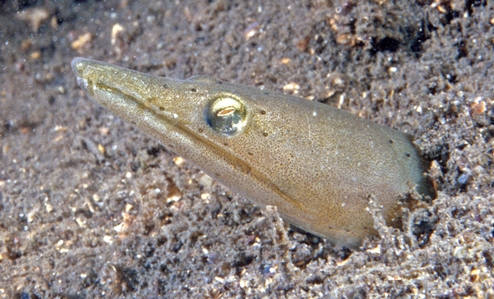General Description
Body very slender, snake-like, tapering to a point, with low dorsal and anal fins barely reaching tail tip, small prominent pectoral fins and long slender jaws, the upper extending beyond the lower. Greenish to sandy-brown, juveniles silvery. To 2.5 m.
Biology
Juveniles are found in bays and estuaries, often with their heads protruding from the sand, while adults live offshore. They have powerful jaws armed with sharp teeth and should be handled with great care.
Habitat
Temperate waters, burrowing into sandy and silty bottoms in bays, estuaries and along the coast, in depths of 0-550 m.
Soft substrates
Distribution guide
Southern Australia.
Species Group
Depth
Shore (0-1 m)
Shallow (1-30 m)
Deep ( > 30 m)
Water Column
Max Size
2.5 m
Commercial Species
No
Global Dispersal
Native to Australia
Conservation Status
- DSE Advisory List : Not listed
- EPBC Act 1999 : Not listed
- IUCN Red List : Not listed





